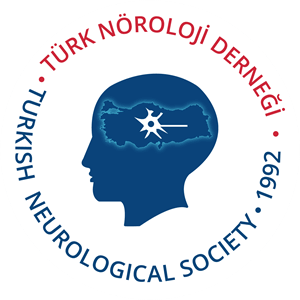Investigation of mutations in early-onset Parkinson’s disease through next-generation sequencing analysis
Tuba Sözen Turk1 , Ahmet Acarer2
, Ahmet Acarer2 , Asude Durmaz3
, Asude Durmaz3 , Burak Durmaz3
, Burak Durmaz3 , Figen Gokcay2
, Figen Gokcay2 , Zafer Colakoglu2
, Zafer Colakoglu2 , Haluk Akın3
, Haluk Akın3 , Ozgur Cogulu4
, Ozgur Cogulu4 , Ayca Aykut3
, Ayca Aykut3
1Department of Medical Genetics, İzmir City Hospital, Medicine İzmir, Türkiye
2Department of Neurology, Ege University Faculty of Medicine, İzmir, Türkiye
3Department of Medical Genetics, Ege University Faculty of Medicine İzmir, Türkiye
4Department of Pediatric Genetics, Ege University Faculty of Medicine İzmir, Türkiye
Keywords: Early-onset Parkinson's disease, next-generation sequencing, novel mutation.
Abstract
Objectives: This study aimed to expand our understanding of the genetic basis of Parkinson's disease (PD) by investigating individuals diagnosed with early onset PD (EOPD) or those with a suspected genetic predisposition to PD.
Patients and methods: Thirty patients (18 females, 12 males; mean age: 33.2±6.4 years; range, 15 to 48 years) diagnosed with EOPD between January 2018 and December 2019 were included in the study. A targeted next-generation sequencing analysis was conducted on 10 genes (SNCA, LRRK2, VPS35, PARK2, PINK1, PARK7, ATP13A2, PLA2G6, FBXO7, DNAJC6) known to be associated with PD etiology. Additionally, the MLPA method was used to investigate eight genes (SNCA, PARK7, LRRK2, ATP13A2, PINK1, GCH1, PRKN, and UCHL1) for large deletions and duplications.
Results: Mutations in PD-associated genes were identified in seven out of the 30 patients included in the study. Four patients exhibited mutations in the PRKN gene: three had defined deletion mutations (exon 5 deletion, exon 2 deletion, and exon 3 and 4 deletion), and one had a splice site mutation newly identified in this study (c.1083+1delG). Two patients displayed a point mutation in the PLA2G6 gene (c.1705C>T), and one patients had a point mutation in the PINK1 gene (c.1247C>T). The clinical and genetic characteristics of these patients were analyzed to explore genotype-phenotype correlations.
Conclusion: This study is one of the few in Türkiye to examine the molecular etiology of EOPD. The identified mutations in the PRKN, PLA2G6, and PINK1 genes provide valuable insights into genotype-phenotype correlations in PD cases and contribute to the existing literature.
Cite this article as: Sözen Turk T, Acarer A, Durmaz A, Durmaz B, Gokcay F, Colakoglu Z, et al. Investigation of mutations in early-onset Parkinson’s disease through nextgeneration sequencing analysis. Turk J Neurol 2025;31(2):109-117. doi: 10.55697/tnd.2025.163.
The data that support the findings of this study are available from the corresponding author upon reasonable request.
Conceived and designed the study, performed the data analysis, and interpreted the results. She was responsible for the overall data interpretation and statistical analysis: T.S.; Contributed to the patient recruitment, clinical evaluation, and management of patient data. He also participated in the review of clinical findings and provided input on the manuscript: A.A.; Assisted in data collection, contributed to clinical assessments, and was involved in interpreting clinical outcomes: A.D.; Worked on patient recruitment, managed the clinical data, and supported the clinical evaluation process: B.D.; Contributed to patient recruitment, data collection, and clinical assessments: F.G.; Participated in patient recruitment and clinical evaluations: Z.C.; Contributed to clinical evaluations, data interpretation, and review of the manuscript. He also provided guidance in clinical aspects throughout the study: H.A.; Led the clinical evaluation, patient recruitment, and provided expertise on the interpretation of clinical findings: O.C.; Coordinated the data analysis, contributed to the interpretation of results, and was responsible for statistical analysis. She played a key role in manuscript writing and final revisions: A.A.
The authors declared no conflicts of interest with respect to the authorship and/ or publication of this article.
The project numbered TTU-2020-21811 was supported by the Ege University Scientific Research Projects Coordination Unit (Ege BAP).


